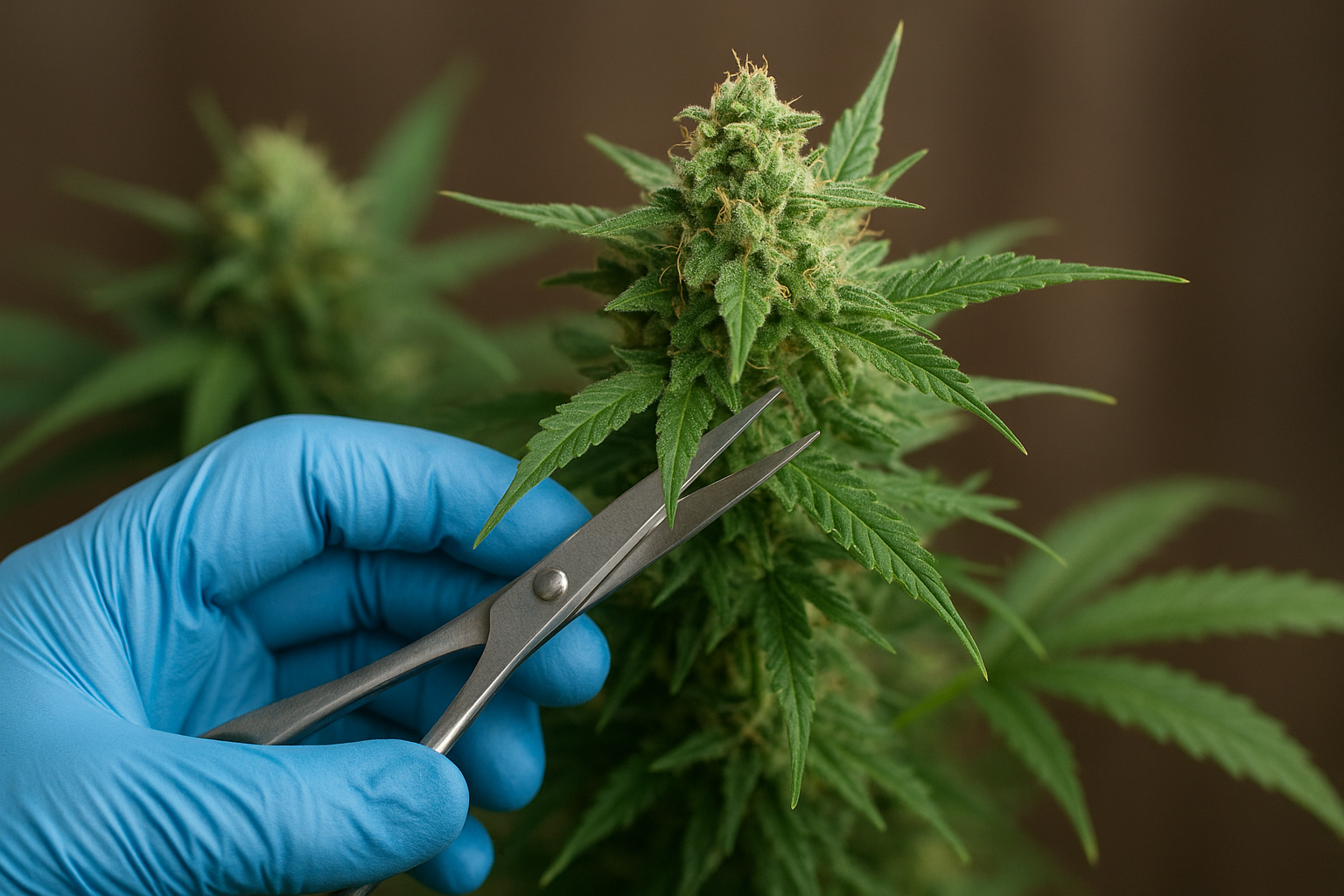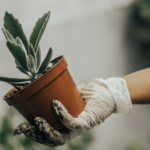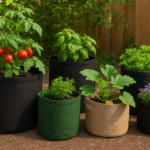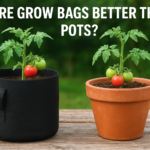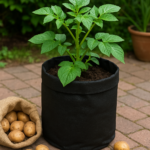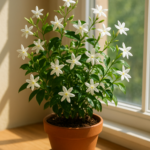Trimming weed plants is one of the most crucial steps in cannabis cultivation. It’s not just about making buds look pretty—it directly impacts the flavor, potency, and overall smoking experience. When you trim, you’re removing unnecessary leaves, especially the fan and sugar leaves that don’t add much to the quality of the final product.
Trimming also helps improve airflow, prevent mold, and make buds more appealing. Many beginners confuse trimming with pruning, but they are different. Pruning happens during the plant’s growth to encourage healthier development, while trimming is done after harvest to refine the buds. Think of trimming like giving your plant a final haircut before it goes to market or into your personal stash. Done right, trimming can take average-looking buds and turn them into beautiful, professional-grade cannabis that burns smoothly and tastes amazing.
Understanding the Basics of Cannabis Plant Growth
Before diving into trimming, it’s important to understand how cannabis plants grow. Weed plants have several parts: stems, branches, fan leaves, sugar leaves, and of course, buds. During the vegetative stage, the plant focuses on developing strong stems and wide leaves to capture light. Once flowering begins, buds start forming, surrounded by tiny sugar leaves coated with trichomes. As harvest time approaches, growers notice that the big fan leaves often shade buds, limiting light and air circulation. This is where trimming comes in.
By carefully removing excess leaves, you allow the buds to mature more evenly and prevent wasted energy. Trimming isn’t random; it’s about understanding the plant’s structure and targeting what doesn’t contribute to the smoking experience. With a little practice, growers learn to distinguish between what to keep and what to snip away.
The Benefits of Trimming Weed Plants
Trimming offers a long list of benefits that go beyond aesthetics. First, it significantly improves airflow around buds, which helps reduce the risk of mold or mildew, a common issue in dense flowers. Better airflow also means the plant dries evenly, preventing harsh smoke. Second, trimming enhances light penetration—when leaves aren’t blocking the way, lower buds receive more energy to grow bigger and stronger. Third, properly trimmed buds have a better bag appeal.
Imagine opening a jar of perfectly manicured buds compared to leafy, messy ones. Which would you choose? The trimmed ones every time. On top of that, trimming ensures a smoother smoke since excess leaves contain chlorophyll, which burns harshly. And finally, trimming helps maximize potency by concentrating the experience on the resin-packed buds rather than unnecessary plant material.
Types of Trimming – Wet vs. Dry
Wet Trimming Explained
Wet trimming is when you trim your buds right after harvest while the plant is still fresh. Growers remove the fan and sugar leaves before drying the buds. The biggest advantage of wet trimming is that it’s easier—fresh leaves are soft, and trichomes aren’t as brittle, so you can work faster. Wet trimming also helps prevent mold in humid climates since there’s less leafy material during drying. However, wet trimming can be sticky and messy because the buds are full of moisture and resin. It’s a good option for beginners who want to get trimming done quickly, but it requires gloves and frequent cleaning of scissors.
Dry Trimming Explained
Dry trimming happens after the entire plant has been hung to dry. Once the buds lose most of their moisture, growers trim off the crispy sugar leaves. This method is slower and requires patience, but it preserves terpenes and keeps buds more aromatic. Dry trimming is favored in drier climates since drying with extra leaves slows the process, preventing buds from overdrying too quickly. The downside is that sugar leaves become brittle and can knock off trichomes easily if handled roughly. Still, many professional growers prefer dry trimming for its superior flavor and appearance.
Pros and Cons of Each Method
Both methods have their strengths. Wet trimming is quick, less labor-intensive, and reduces mold risks. Dry trimming, on the other hand, results in higher-quality buds with better flavor retention. The choice depends on your environment and personal preference. Beginners might like wet trimming for ease, while connoisseurs may choose dry trimming for quality.
Tools You Need for Trimming Weed Plants

Scissors and Shears
The most essential tool is a pair of sharp trimming scissors. Small, curved-tip scissors work best for precision cuts around buds, while larger shears are useful for chopping off fan leaves. Invest in high-quality stainless steel scissors that don’t stick as much and can be cleaned easily.
Trimming Tray and Gloves
A trimming tray keeps everything organized and collects fallen trichomes, which can later be used for hash or edibles. Gloves are equally important since trimming gets sticky fast. Nitrile or latex gloves prevent resin from coating your hands and help you work longer without discomfort.
Cleaning Supplies for Sticky Resin
Trimming gets messy, and scissors can gum up quickly. Keep rubbing alcohol, wipes, and extra cloths nearby to clean tools regularly. A clogged pair of scissors slows you down and ruins precision. Some growers even keep multiple pairs of scissors handy to rotate while cleaning.
Step-by-Step Guide to Trimming Weed Plants
Step 1 – Harvesting the Plant
Begin by cutting the plant at its base and deciding whether to trim branches individually or hang the whole plant. This depends on your drying method and available space.
Step 2 – Removing Large Fan Leaves
Start by removing the big fan leaves that don’t contain much resin. These are easy to spot and can be pulled off or snipped away.
Step 3 – Trimming Sugar Leaves Around Buds
Next, carefully trim away the sugar leaves. These tiny leaves are close to the buds and often coated with trichomes. Some growers save them for making hash or butter.
Step 4 – Final Touches and Shaping the Buds
Once most leaves are gone, shape the buds for a clean look. Trim any remaining stems or small leaves sticking out. This step gives your weed a professional appearance.
Common Mistakes Beginners Make When Trimming
Many new growers rush trimming, leading to uneven results. Cutting too deep can damage trichomes, reducing potency. On the other hand, leaving too many leaves makes buds harsh to smoke. Another mistake is trimming when too tired—sloppy cuts can ruin hours of work. Beginners also forget to clean tools, slowing themselves down. Patience and precision are key. Remember: trimming isn’t a race. It’s about quality, not speed.
Tips for Perfect Trimming Every Time
Set up a comfortable workspace with good lighting and ventilation. Hold scissors at a steady angle and trim slowly around buds. Take regular breaks to avoid hand cramps and fatigue. Always use sharp, clean scissors for smooth cuts. Listen to music or chat with friends to make trimming less tedious. Over time, you’ll find a rhythm that works best for you.
How to Store Trimmed Weed Properly
Once trimmed, buds need proper storage to preserve freshness and potency. The best option is glass jars with airtight lids. Avoid plastic bags since they allow air in and degrade terpenes. Store jars in a cool, dark place to prevent light and heat from damaging THC. Use humidity packs to maintain ideal moisture levels (around 58–62%). Proper storage keeps buds fresh, flavorful, and potent for months.
What to Do with Cannabis Trimmings
Making Hash and Concentrates
Sugar leaves and resin-covered trim can be turned into hash or other concentrates. This makes trimming waste-free and maximizes yield.
Edibles and Cannabutter
Leftover trim is perfect for making edibles. By infusing trim into butter or oil, you can create potent edibles without wasting buds.
Composting the Leftovers
If you don’t want to use trimmings, compost them. They add valuable nutrients back into your soil for future grows.
Indoor vs. Outdoor Plant Trimming
Indoor plants are often smaller and easier to trim since they grow in controlled conditions. Outdoor plants, however, can be massive with lots of extra leaves, making trimming more labor-intensive. Outdoor trimming often requires teams, while indoor growers can usually handle it alone.
Trimming for Personal Use vs. Commercial Use
For personal grows, trimming is about quality and enjoyment. Growers often take their time to produce beautiful, smooth-smoking buds. In commercial settings, speed is critical. Trimmers often work in teams and use machines to process large harvests quickly, sometimes sacrificing a bit of quality for efficiency.
Advanced Trimming Techniques for Professional Growers
Professional growers often experiment with artistic trimming to make buds stand out. Some prefer hand-trimming to maintain maximum trichomes, while others use trimming machines for bulk harvests. Machine trimming is faster but can sometimes damage delicate trichomes. High-end cannabis brands usually stick to hand-trimming for top-shelf products.
Conclusion
Trimming weed plants is both an art and a science. It requires patience, precision, and the right tools. Whether you choose wet or dry trimming, the goal is the same: to create clean, potent, and visually appealing buds. Remember, trimming isn’t just about looks—it affects taste, aroma, and overall quality. By avoiding beginner mistakes, using proper techniques, and storing your buds correctly, you can take your harvest from good to exceptional. Like any skill, trimming improves with practice, so the more you do it, the better you’ll get.
FAQs
1. When is the best time to trim weed plants?
Right after harvest for wet trimming or after drying for dry trimming, depending on your preference.
2. Can I smoke sugar leaves instead of trimming them?
Yes, but they are harsh and less potent. It’s better to use them for edibles or concentrates.
3. How long does it take to trim a plant?
It varies—small plants may take an hour, while large outdoor plants can take several hours or even days.
4. Do trimming machines work well?
They are fast and efficient but may damage delicate trichomes. Hand-trimming ensures better quality.
5. Can trimming affect potency?
Indirectly, yes. Over-trimming can knock off trichomes, while under-trimming leaves harsh material that affects smoke quality.

